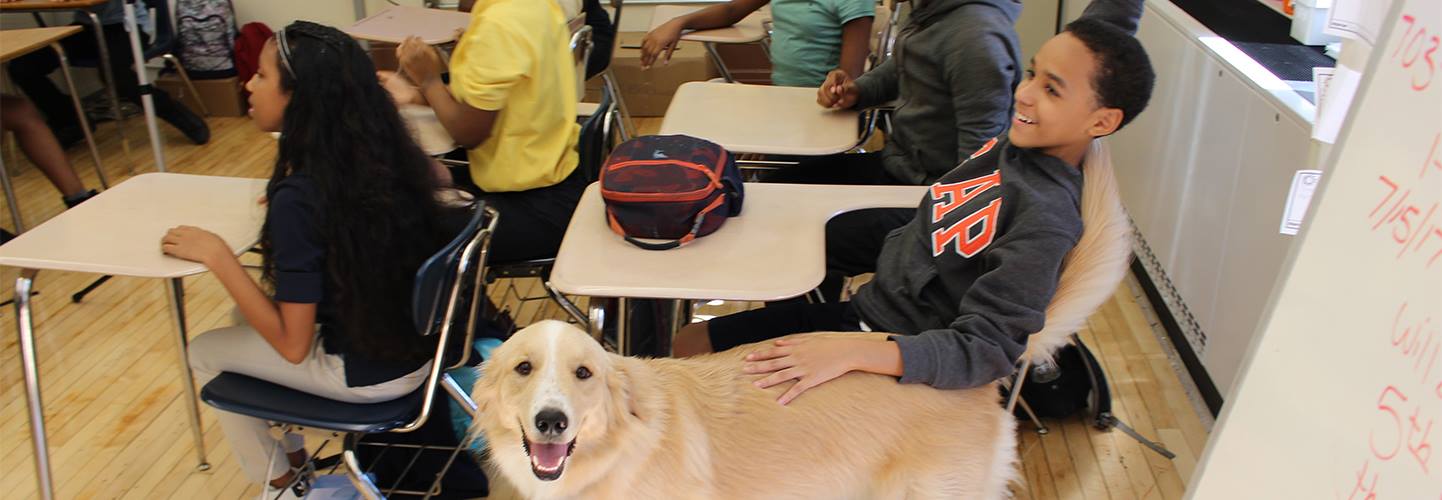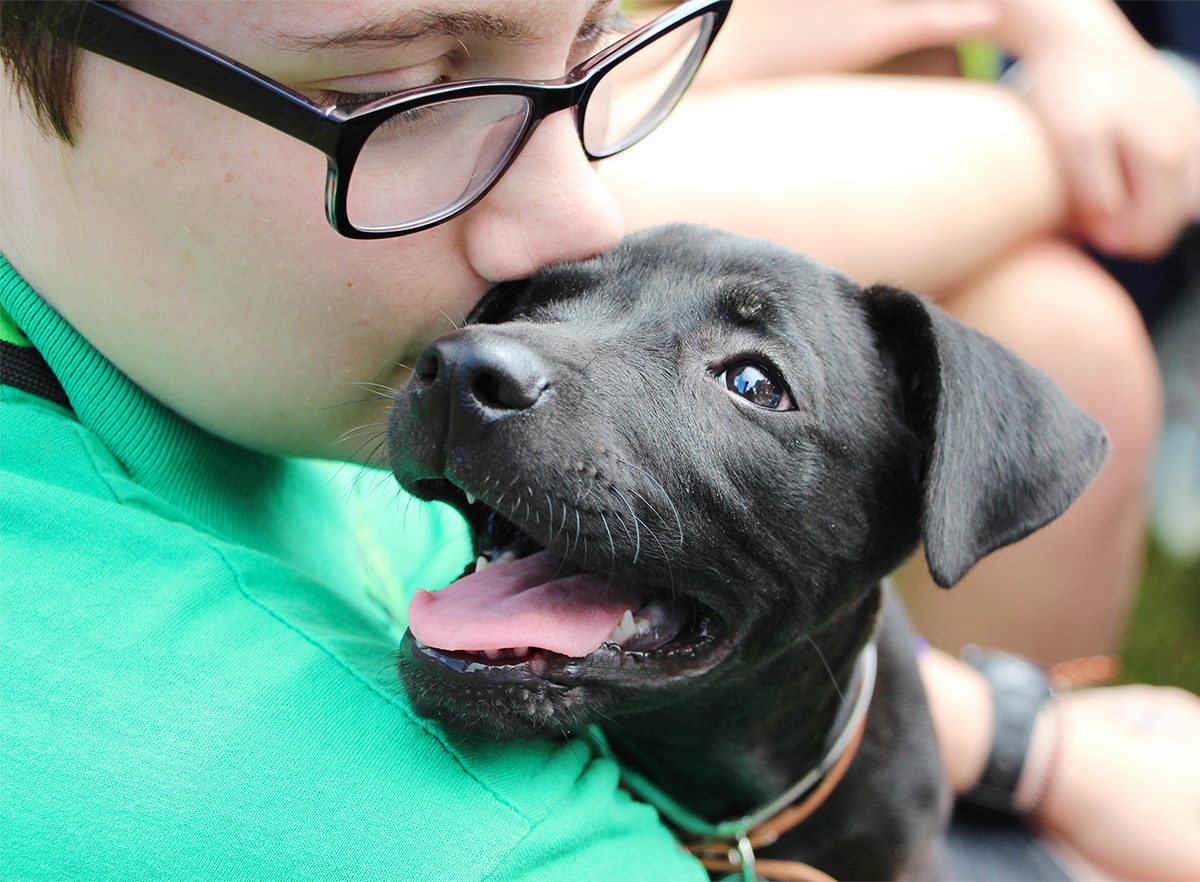
- Better Society -
- 3mins -
- 229 views
Rescue dogs have been having a surprising impact on students in public schools across America
Some 4000 public schools across the US have adopted an innovative social and emotional learning curriculum — one that highlights the unique characteristics of shelter pets to teach essential skills for academic and life success.
Benefiting the students, the animals and working toward a more compassionate society at large
The Mutt-i-grees Curriculum is a new, innovative program that builds on children’s natural affinity for animals and highlights the unique characteristics and desirability of shelter pets. The goal of the curriculum is to enable children to grow up to be calm, confident, and caring. More than just another educational curriculum, it sets in motion the fundamentals needed to help transform the classroom and school climate, enhance teacher-student interactions, and engage parents and the wider community.
How the Mutt-i-grees Curriculum works
Recently, educators have been finding that one surprising factor in the classroom has had tremendous success in reducing bullying, encouraging engagement and even teaching kids about empathy. That magic ingredient isn’t fancy software or boatloads of funding, but… pets!
An article on the website of Purina One, pet food giant and partner of the co-creators of the program, explains how it works:
Over 4000 schools and libraries in all 50 states, including DC, and Canada have implemented a program called Mutt-i-grees, which was co-created by Purina’s partner shelter, The North Shore Animal League America (NSALA). The program aims to work with children’s love for animals to teach about the great pets waiting for homes at shelters. While the children learn about shelter cats and dogs, they also learn about themselves — in ways you might not guess.
One of the common lessons of the Mutt-i-grees program is teaching kids the difference between empathy and sympathy, which can be complicated for them to understand. As teachers show the children how to recognise a dog’s emotions and feelings, the kids are also becoming attuned to their own feelings, which can help them develop the skills they need to communicate their own. In some cases, the program has helped children with autism make strides in connecting to their teachers and making friends.
Source: PurinaOne

Even thinking about dogs can help children focus and improve their moods
Children have a hard time understanding why bullies act the way they do, but the Mutt-i-gree program helps them view behavior through a dog’s motivations. They might learn that dogs who are defensive may act that way because their life may have forced them to be protective of themselves and put their guard up.
Seeing the parallel between dogs and playground bullies has not only reduced bullying, but made kids sensitive to the fact that their peers might have problems of their own.
Some schools actually incorporate animals into the classroom, while others simply use a puppet or storybooks to teach their lesson. According to studies, even thinking about dogs can help children focus and improve their moods.
To create the Mutt-i-grees program, NSALA partnered with experts in the animal welfare and educational worlds: The Millan Foundation and Yale University’s School of the 21st Century, a program that helps schools translate educational research literature into practice.
Together, they developed a program that’s helped schools reach kids of all backgrounds, giving teachers hope of making a difference, even in a time of recession. To learn more about the Mutt-i-grees program, check out their website.
Source: PurinaOne


